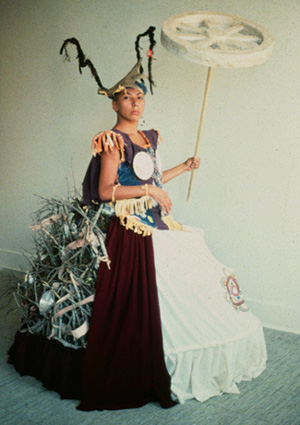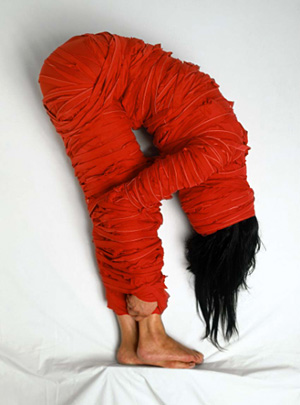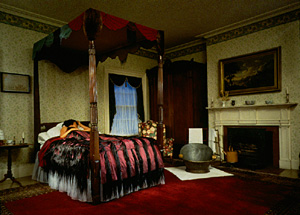
Rising to the Occasion (1987)

White Thread, (2003)

Wild house guests: contemporary artists in the Grange (2001)
Anishinabekwe-Vancouver artist Rebecca Belmore's highly political work has long addressed history, place, and identity through the media of sculpture, installation, video and performance. Throughout her career she has manifested a great sensitivity to her materials and a corresponding feeling for the well made object. Her installations and performances are marked by simplicity of form and gesture and an understanding of the human need for ritual. Belmore has produced installations and performances internationally since 1987, including Creation or Death, We Will Win, at the Havana Biennial, Havana, Cuba (1991) and Vigil, at the Aboriginal Arts Festival, Vancouver B.C. (2003). Her installations have been in numerous group exhibitions: Site Santa Fe, Santa Fe, New Mexico (1995), Liaisons, Power Plant, Toronto, Ontario, and Houseguests, Art Gallery of Toronto (2001). She previously represented Canada at the Sydney Biennale, in Australia in 1998, in a group exhibition format. In 2004, Ms. Belmore received the VIVA Award from the Jack and Doris Shadbolt Foundation and completed a residency with MAWA (Mentoring Artist's for Women's Art) in Winnipeg, Manitoba the same year.
In her exhibition The Named and the Unnamed, organized by the Morris and Helen Belkin Art Gallery, University of British Columbia (curated by Scott Watson and Charlotte Townsend Gault), Belmore's powerful installations confront the viewer with images of loss, struggle, and silence. The Named and the Unnamed was also shown at the Art Gallery of Ontario, Confederation Centre, and the Kamloops Art Gallery. In this exhibition, Vigil, a performance-based video installation, is juxtaposed with several sculptural works that move from the narrative to the lyrical, from action to quiet reflection. Belmore's practice is experiential; she constructs works over time influenced by her indignation about acts of violence, local and global, from the disappearance of women in the Downtown Eastside of Vancouver, to women and children lying dead in the snow at Wounded Knee. Her art dares to be about good and evil, yet it is also filled with hope and trust. "Although at its most effective, Belmore's aesthetic is taut, reductive, and unsentimental", writes Charlotte Townsend-Gault, "it becomes evident that for her there is no sharp divide between aesthetics and ethics."
Belmore's major projects have resulted from her response to specific sites and circumstances offered to her. This is the way she prefers to work. Belmore's Venice Biennale project will be developed over a period of months in the fall and winter of 2004/05. An exhibition catalogue will accompany the video installation at the Venice Biennale in June 2005.
Belmore has said of her work:
My way of working is largely based on immediate experience. The performances I have created over the years often directly responded to the place in which I found myself. Location and memory are key elements in my approach to making art. I have always had a strong interest in trying to imagine where we have been.
When I was a young girl, our mother took us to a tiny island in Northern Ontario to show us where she was born. About ten years ago, long after our mother's death, my sister and I went on a canoe trip with the intent of revisiting this island. Navigating by childhood memory we could not find the place. But, it was enough to be in the midst of a beautiful absence.
This journey driven by the desire to witness again had a profound effect on my creative process. I recall my mother taking us to a small clearing on this island and showing where the cabin had been. We looked at the ground and I could see where the foundation of her birthplace had rotted into the land. A square was drawn by time like a memory onto the earth.
I like to think that this entire experience illustrates how I work. I am aware of the elusive nature of memory. Creating in the presence of the absent makes me a witness. I believe I am just beginning to understand my role, particularly as an artist who has inherited an indigenous history.